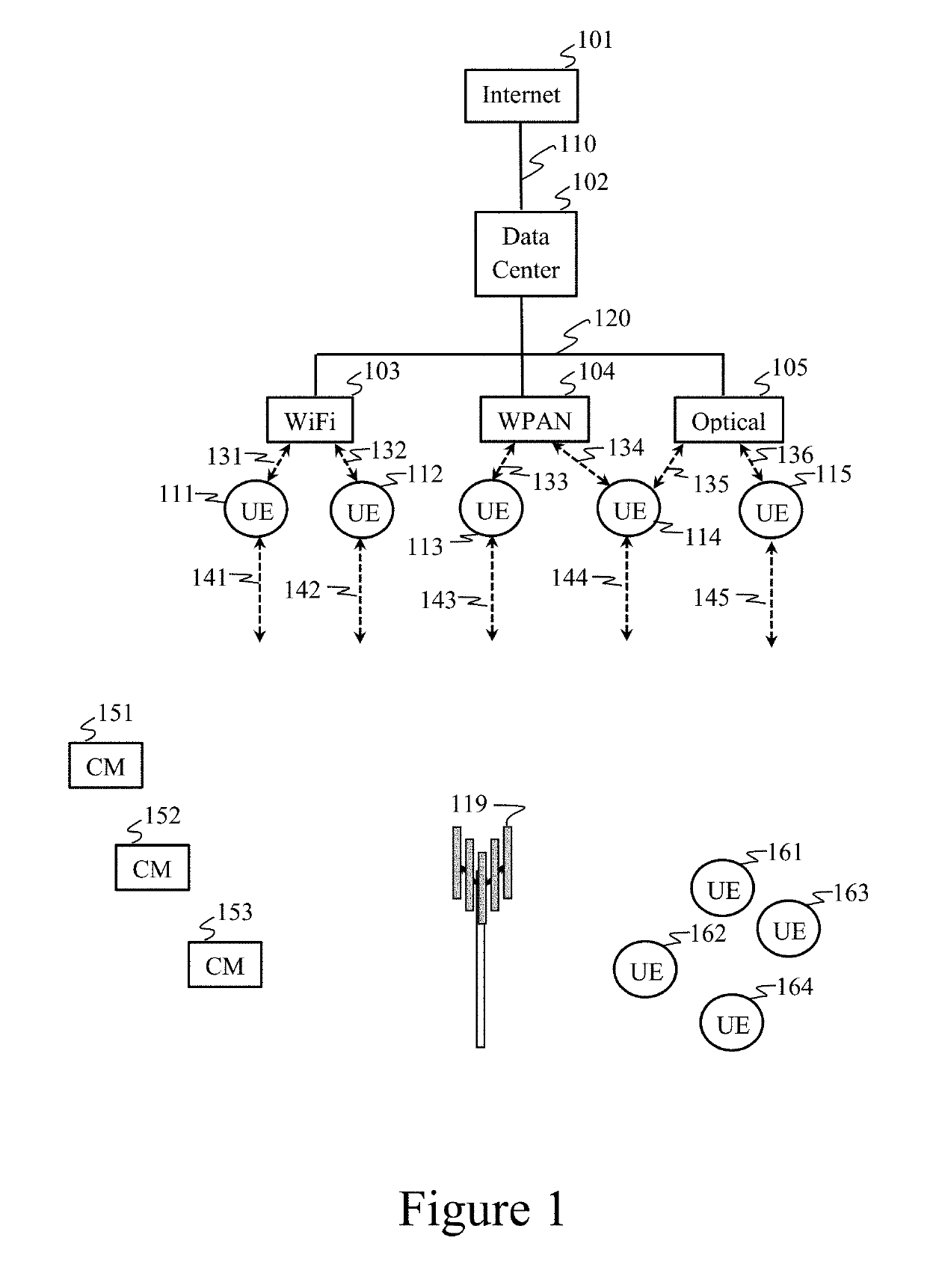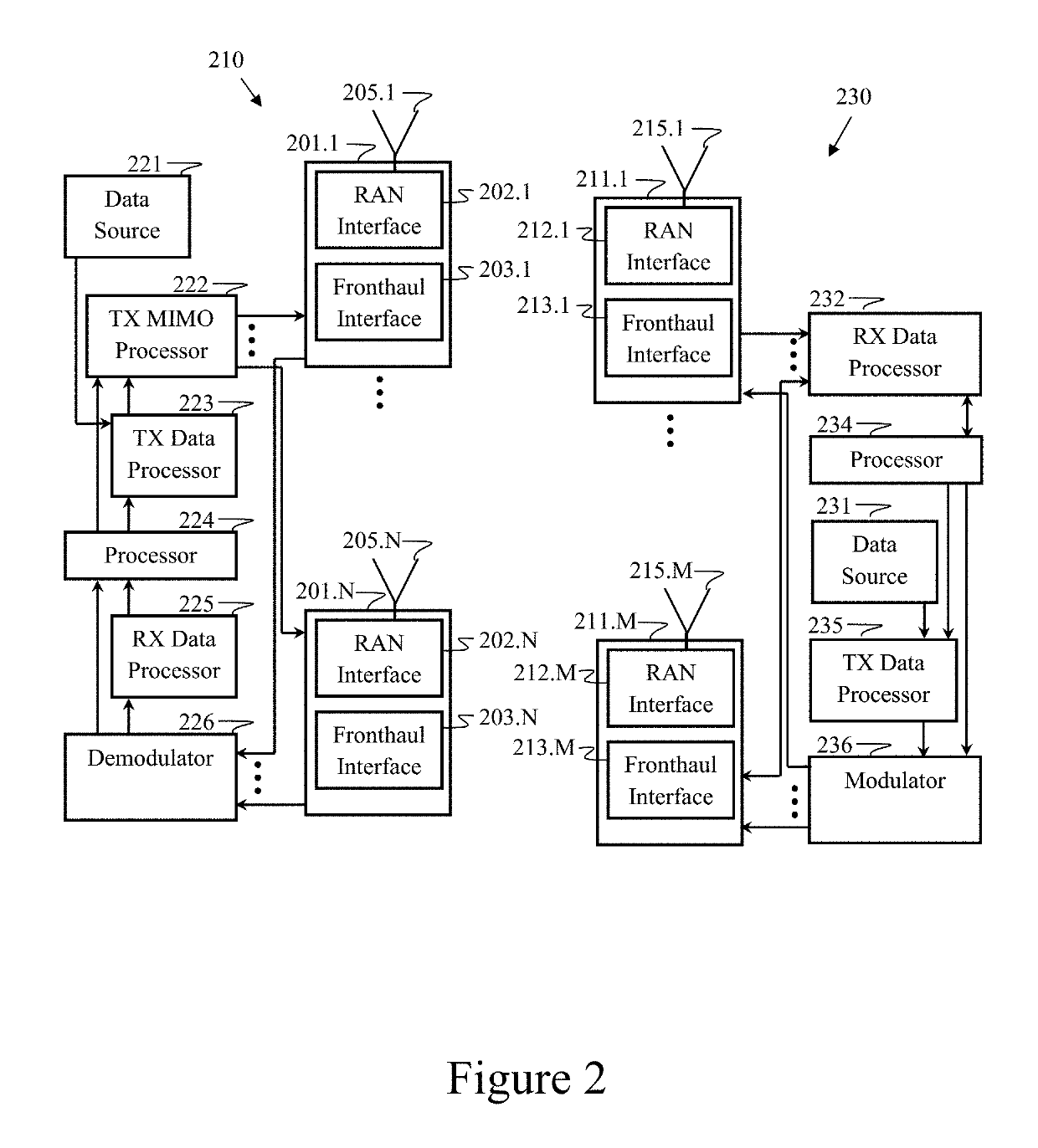Cooperative and parasitic radio access networks
- Summary
- Abstract
- Description
- Claims
- Application Information
AI Technical Summary
Benefits of technology
Problems solved by technology
Method used
Image
Examples
Embodiment Construction
[0054]The detailed description set forth below in connection with the appended drawings is intended as a description of various aspects of the present work and is not intended to represent the only aspects in which the present work may be practiced. The detailed description includes specific details for the purpose of providing a thorough understanding of the present work. However, it will be apparent to those skilled in the art that the present work may be practiced without these specific details. In some instances, well known structures and components are shown in block diagram form in order to avoid obscuring the concepts of the present work.
[0055]Where each aspect of the disclosure might represent a single combination of elements, the present work is considered to include all possible combinations of the disclosed elements. Thus if one aspect comprises elements A, B, and C, and a second aspect comprises elements B and D, then the present work is also considered to include other ...
PUM
 Login to view more
Login to view more Abstract
Description
Claims
Application Information
 Login to view more
Login to view more - R&D Engineer
- R&D Manager
- IP Professional
- Industry Leading Data Capabilities
- Powerful AI technology
- Patent DNA Extraction
Browse by: Latest US Patents, China's latest patents, Technical Efficacy Thesaurus, Application Domain, Technology Topic.
© 2024 PatSnap. All rights reserved.Legal|Privacy policy|Modern Slavery Act Transparency Statement|Sitemap



